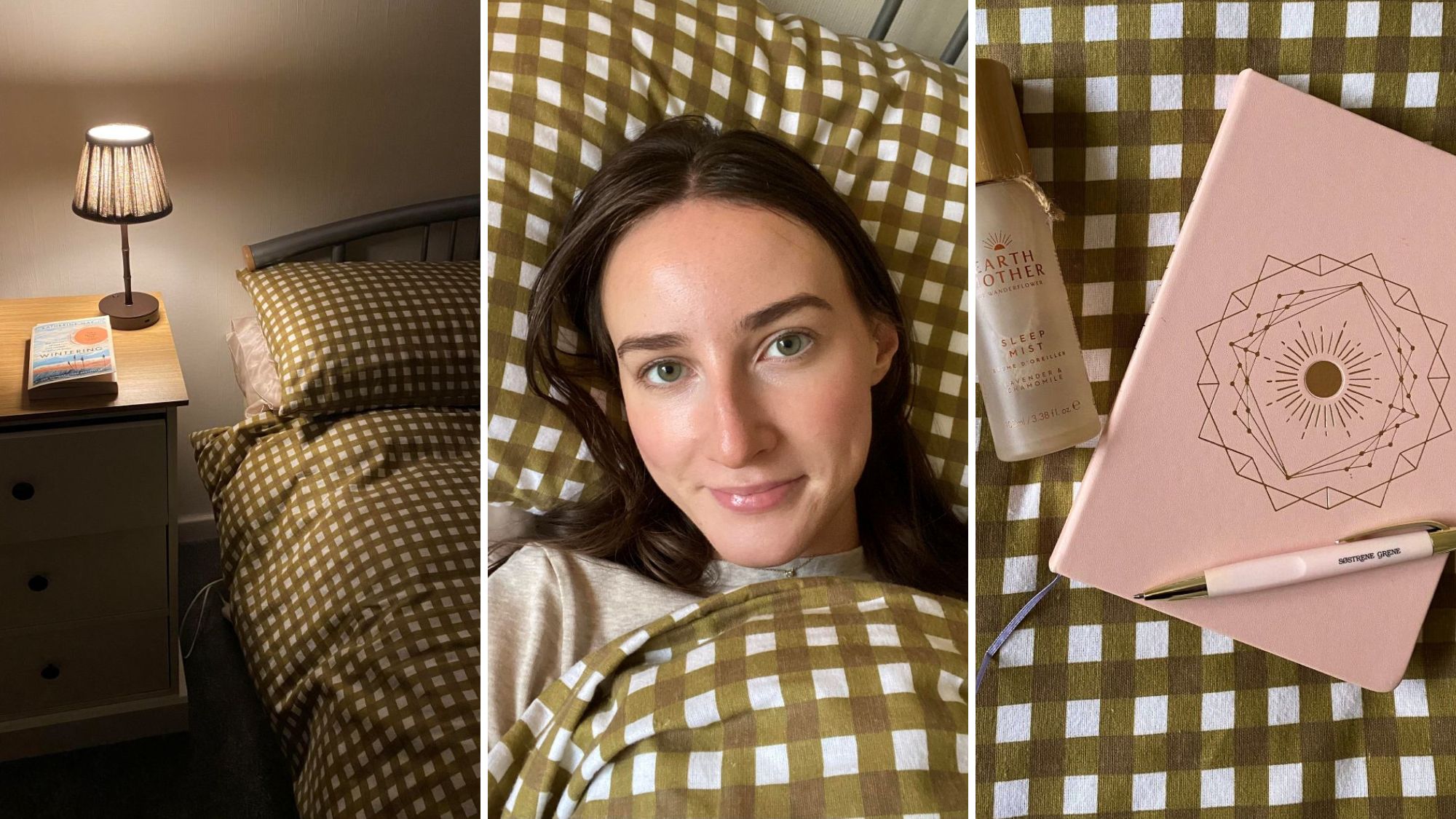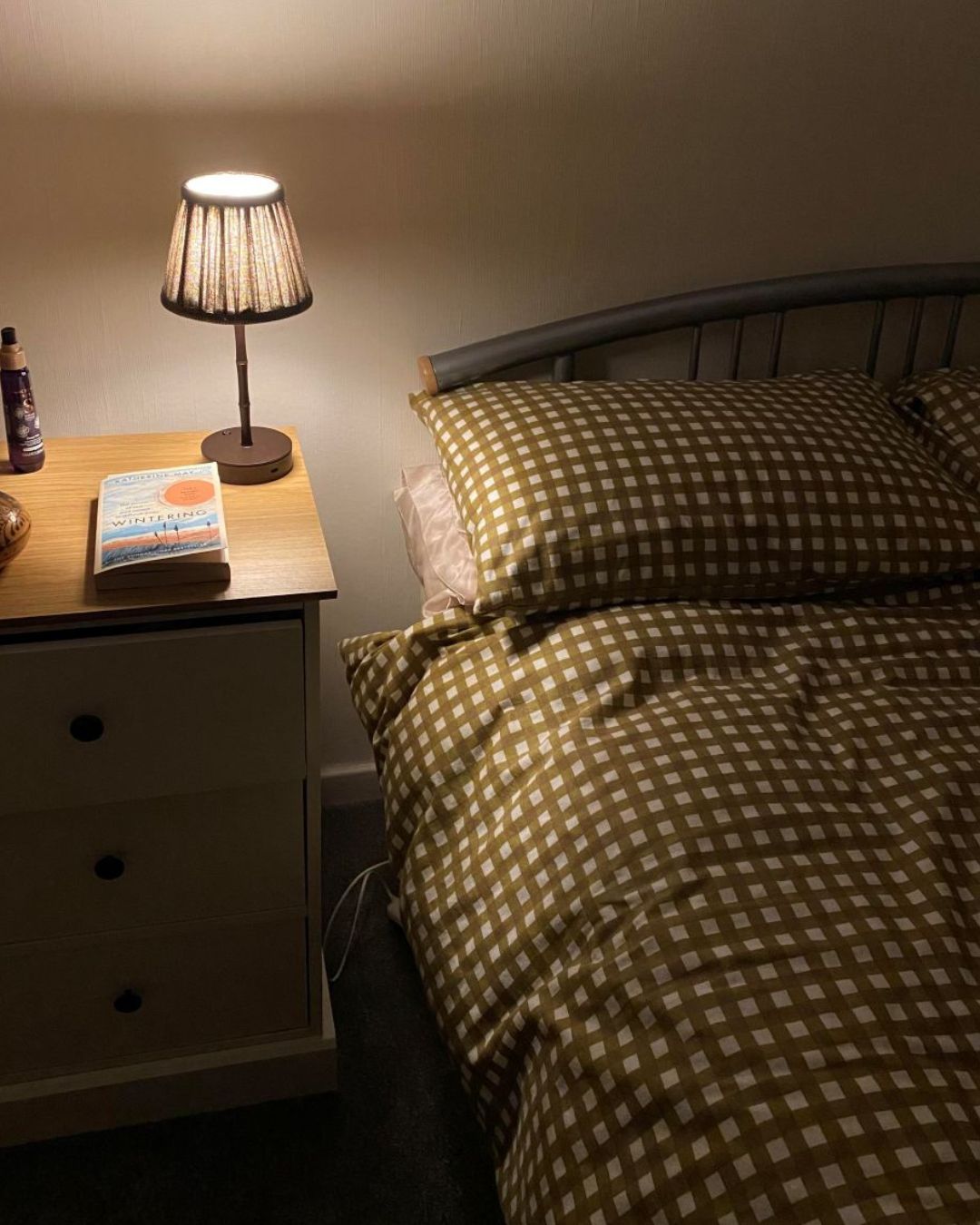The Clocks Changing Always Throw Me – so I Tried Mel Robbins’ Viral Five-Step Evening Routine to Supercharge My Sleep
Trend worth trying or wellness fad?


Every year when the clocks go back, my body seems to forget how to sleep through the night. I go from blissfully snoozing through my precious eight hours to lying in bed at 3 a.m., brain whirring and anxiously counting the hours until my alarm goes off.
I felt better after speaking to Dr Maja Schaedel, co-founder and director of The Good Sleep Clinic. She reassured me that it's pretty common to have trouble sleeping at this time of year.
"Sleep is often more difficult in the first couple of weeks after the clocks go back," she explained. "This is down to the shift in our circadian rhythm – our internal body clock. Our bodies and brains take time to readjust to the new timings, and during this process, we can wake early."
Or, in the middle of the night, in my case. And the detriment of this goes beyond my feeling extra grouchy in the morning: research has shown us time and again that sleep is a biological necessity for our health and wellbeing.
It was good timing, then, when I stumbled across Mel Robbins' five-step evening routine for better sleep. Determined to change the annual narrative of suffering with poor sleep at this time of year, I decided to give Mel's routine a go. After all, she claims it's especially beneficial for when there's "zero gas in the tank", which, after a busy work period and a full social calendar, definitely feels like me.
Do I think Mel Robbins' five-step evening routine is worth replicating at home? You'll have to keep reading to find out. Make sure you check out what happened when one of MC UK's other Health Writers tried Mel Robbins' viral morning routine, too, plus an expert's take on the viral Mel Robbins' Let Them theory. Oh, and if you've heard of sleepmaxxing, we verified with sleep experts whether this was a trend worth cottoning on to (spoiler – we're yet to be convinced).
I tried Mel Robbins' five-step evening routine – and have some thoughts
What is Mel Robbins' five-step evening routine?
The first thing that appealed to me about Robbins' bedtime routine was its simplicity. Her five-step formula for better quality sleep is:
Celebrity news, beauty, fashion advice, and fascinating features, delivered straight to your inbox!
- Pick your bedtime: with a goal of being in bed for a total of nine hours.
- Clean up the mess: putting everything in order so that you start tomorrow with a clean slate.
- Make tomorrow easier: anything you can do the night before – be it prepping a healthy breakfast, choosing your outfit for the day, or filling up your water bottle – do it.
- Five minutes for you: this can be any activity you like, though Robbins encourages you to choose something tech-free.
- Tuck your phone in: find a designated spot for your phone out of arm's reach of your bed, and leave it there for the night.
The idea behind the routine is simple: if you close out your day intentionally, your mind and body can actually rest. Each step – picking a bedtime, tidying your space, prepping for tomorrow, taking five minutes for yourself, and “tucking in” your phone –works to lower stress and reduce mental clutter before sleep.
What are the benefits of Mel Robbins' five-step evening routine?
At its core, this routine is about creating calm and structure at the end of a busy day. For many of us, evenings can feel like a blur of unfinished tasks and mental clutter, and having a routine like this gives us permission to slow down and reset. As Dr Schaedel puts it, it’s “designed to help people clear their minds and lighten their loads.”
It'll come as no surprise that Dr Schaedel is also a big fan of step five, putting your phone away before bed. "Our phones provide a huge amount of stimulation, and they can really get in the way of sleep," she confirmed to MC UK. The proof is in the pudding: a 2021 study published in Sleep Science found that excessive smartphone screen time is detrimental to the quality of our sleep.
Sleep expert James Wilson – also known as The Sleep Geek – says that there's merit in the ritualistic nature of Robbins' evening routine, too. "Our body and brain like to know that when we do this thing, the next thing we're going to do is sleep," he says. "This routine gives a set of activities that are good indicators to your body that we are preparing for bed."
@melrobbins If you want better sleep, change THIS first. Hear more on this episode of The Mel Robbins Podcast, 🎧 “Get Back on Track 5 Evening Habits to Wake Up Focused, Recharged, and in Control.”
♬ original sound - Mel Robbins
Are there any problems with it?
Of course, Mel Robbins isn't a sleep expert, and this is just the routine she's designed to help herself get better quality sleep. But she is recommending it with the conviction that anyone can use it and experience the benefits.
According to Wilson, therein lies the problem with this routine. "It is based on a dataset of one – Mel," he says. "It is very prescriptive, so it's not taking into account an individual's unique circumstances."
With that in mind, I think it's always important to consider how a viral trend or routine suits your lifestyle, and adapt it accordingly. The goal should never be perfection, and I kept this in mind when trying out Robbins' evening routine, using it as more of an inspiring framework than a rigid set of rules.
Dr Schaedel also queried the importance Robbins places on tidying up before bed. "It's rare to find that people's sleep problems can be solved with cleaning their house," she told me. "The stress that people feel is often persistent and pervasive and can not necessarily be made "easier" very easily."
So, while the simplicity of Robbins' evening routine is attractive, keep in mind that it won't act as a cure-all for life's problems. And, Dr Schaedel adds, it's just as important, if not more, to set up a wake-up time as it is a bedtime.
"It's good to have a set wake-up time and have a rough idea of what bedtime suits you – but to only get into bed when you're feeling really sleepy."
Trying Mel Robbins' five-step evening routine
Days one to three
Armed with Mel Robbins’ five-step plan, I was feeling quietly optimistic about my sleep this week. Picking a set bedtime already felt like a win – I usually spend at least 30 minutes a night analysing when I should retreat into the bedroom (hi, overthinking). It felt good to have the decision already made.
And tidying my space took less than ten minutes each night, but it genuinely shifted my mindset; it’s harder to feel chaotic when your surroundings aren’t.
The “make tomorrow easier” step – laying out my clothes and prepping breakfast – turned out to be my favourite. It sounds small, but it made my mornings noticeably calmer. I already avoid my phone before bed, so that final step felt more like a reaffirmation of something I know works rather than a big adjustment.
By the third night, I was already seeing small changes. My sleep wasn’t perfect, and I did still wake up in the middle of the night on day two, but I could tangibly feel that my mornings were starting with less chaos and more focus. There was something surprisingly grounding about closing each day the same way.

Days four to seven
Midweek, my enthusiasm dipped. Social plans, which I don't usually have, threw off my schedule, and sticking to my chosen bedtime became unrealistic. This is where treating the routine as a framework rather than a strict checklist came in really handy. I decided to skip the cleaning on a couple of nights and just focused on the “five minutes for yourself” step – I chose to journal, my favourite way to clear out the mental clutter and switch off from the day.
By the end of the week, I wasn’t sleeping like a baby, but my relationship with my evenings had definitely changed. My space felt calmer, I went to bed feeling more relaxed, and I woke up less frazzled. The biggest shift wasn’t in how quickly I fell asleep – it was in how I felt before I did. For once, my evenings had a bit of structure.
While I won't be sticking to Robbins' five-step plan rigidly going forward, I’ll be keeping the spirit of it alive – using those small rituals as gentle cues to slow down and switch off.

Shop for new sleep essentials here:

Wearing earplugs has been a game-changer for my sleep. No more waking up every time my partner turns over, thank you. Heard about the brand and keen to learn more? Don't skip our edit of the best Loop earplugs, here.
What's one thing we can do for better sleep?
Sleep expert James Wilson says that if there's one tip that consistently helps his clients sleep better, it's "getting ready for bed" an hour in advance.
Speaking to MC UK, he said: "One of the biggest mistakes we make is that we'll be sat on the sofa, feeling sleepy, and then we start doing daytime stuff - putting the pets out for a wee, emptying the dishwasher, tidying the house, brushing our teeth, taking our makeup off, having a chat with our partner. Then we get into bed, and our bodies are awake again."
Instead, Wilson recommends, go straight to bed when you start to feel sleepy. "It will make a huge difference," he promises.

Katie Sims is a freelance journalist who writes about a variety of topics for publications including Woman&Home, Liz Earle Wellbeing, Who What Wear, and Ideal Home. She graduated with a Master's in Media and Journalism in 2021 and has been writing engaging digital content ever since. Her biggest passion is all things health and wellness, and she's tested fitness devices, workout methods, and nutritional advice to see what can help her (and others) feel good from the inside out. She's also a lover of beauty, particularly skincare. When she's not writing health and wellness content, she'll either be on a long walk, at a Pilates class, or tackling her long list of books to read.

